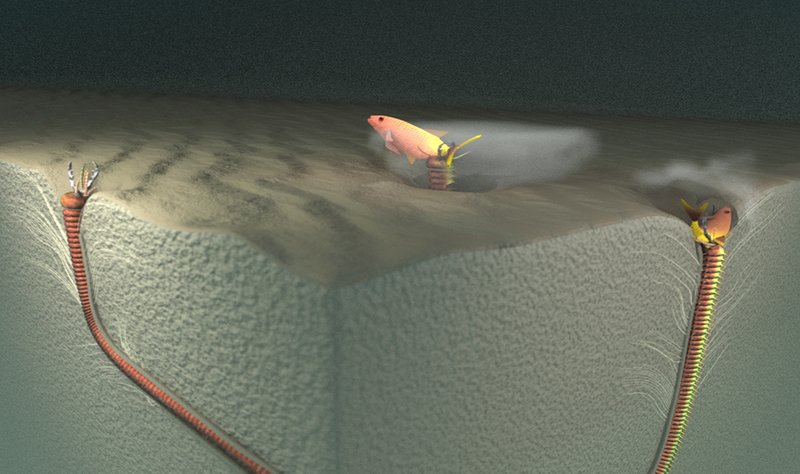
Bobbit worms belong to the *Eunice aphroditois* species and are notorious for their incredible hunting skills. They lie in wait, camouflaged within the sand, ready to strike unsuspecting prey like fish or crustaceans. If you’re an aquarium enthusiast or just a curious marine explorer, understanding how to coax these remarkable creatures out of their hideouts can be both rewarding and educational.
Understanding Bobbit Worm Behavior
Before you even think about digging for a Bobbit worm, it’s essential to understand a little about their behavior. These worms are masters of disguise, using their ability to blend into their environment to avoid predators and catch prey. They tend to stay hidden during the day, making nighttime the right time for a hunt. When they feel threatened, they can quickly retreat into a deeper part of their burrow, making them even harder to reach.
Bobbit worms also have a very keen sense of vibrations in the water. If you’ve ever seen a cat perk up at the sound of a can opener, you’ll get the idea. They can sense when something is approaching, so if you’re planning to dig one out, being stealthy is key. Think of yourself like a ninja trying to catch a mouse; every little movement counts.
Gathering the Right Tools
Now that you have a better grasp of Bobbit worm behavior, it’s time to gather your tools. You’ll need to approach this task with a bit of finesse. Here’s what I recommend:
- Long-handled tongs: These will help you reach into the burrow without getting your hands too close, avoiding the worm’s sharp jaws.
- A small shovel or trowel: This will come in handy for gently scooping away the sand and gravel.
- A bucket or container: Use this to safely transfer your find once you’ve coaxed it out.
- Flashlight: If you’re digging at night, a good flashlight can help you see the worm and the surrounding environment better.
Equipping yourself with the right tools is like gearing up for a treasure hunt. You wouldn’t want to show up without a map, right? Similarly, having the fundamentals in your kit sets you up for better success.
Choosing the Right Time to Dig
When it comes to digging out Bobbit worms, timing truly is everything. As I mentioned earlier, these worms are mainly nocturnal. If you can, try to conduct your digging during the early morning or late evening hours. This is when they are more likely to be near the surface, making them easier to coax out.
You might also consider the tide. If you’re by the shore, low tide is your friend. This can reveal more of the sandbars where Bobbit worms might reside. Picture it as fishing after a rain; the conditions become just right for a catch. So, plan your expedition around these natural occurrences for the best shot at success.
Gentle Digging Techniques
Once you’ve picked the right time, it’s time to get digging—but remember to keep it gentle. Here’s a simple step-by-step on how to do this properly:
1. Locate the burrow: Watch for any visible disturbances in the sand, like a small mound or holes.
2. Start scooping: Using your small shovel, gently scoop away the sand surrounding the burrow in small amounts. Think of it as peeling away layers of an onion—slow and careful.
3. Feel for movement: As you dig deeper, keep your tongs ready. If you notice any vibrations or subtle movements, stop digging. This often indicates that the worm is right there.
4. Coax it out: If you can see the worm, gently use the tongs to lure it out. You might lightly tap near its head to encourage movement—don’t poke or prod too harshly!
Remember, patience is key. Rushing can cause a lot of unnecessary stress for both you and the worm.
Handling the Bobbit Worm Safely
Once you successfully dig out a Bobbit worm, it’s crucial to handle it carefully. These worms can be quite long and slippery, so keeping a grip can be challenging. Here’s how to do it safely:
– Support the body: Use both hands if possible; one can cradle the middle while the other holds the rear. This reduces stress on the worm and helps you maintain control.
– Avoid sudden movements: Just like when handling a delicate glass ornament, slow and steady wins the race. Rapid movements can cause the worm to thrash about and potentially bite.
– Transfer to a safe container: If you plan on keeping the worm, make sure the container has enough space and water to accommodate it. You wouldn’t want to cram it into a tiny jar!
Handling the worm with care not only ensures its safety but also makes the experience more enjoyable for you.
Ethical Considerations
Before you embark on your Bobbit worm adventure, it’s important to consider the ethical implications. These worms play a crucial role in their ecosystem, helping to maintain the health of the ocean floor. When digging them out, think about whether it’s necessary.
If you’re simply curious and not planning to keep the worm, it’s often best to admire it in its natural habitat. If you do decide to keep one, make sure you’re prepared to provide a suitable environment. Just like adopting a pet, it comes with responsibilities.
In Conclusion
Digging out a burrowed Bobbit worm can be a fascinating adventure, filled with excitement and discovery. By understanding their behavior, gathering the right tools, choosing the right time, and employing gentle techniques, you can approach this task like a true marine explorer. Just remember to handle them safely and ethically—these creatures might be impressive, but they also play an integral role in the ecosystem.
So, whether you’re a curious beginner or a seasoned aquarist, the thrill of uncovering a Bobbit worm awaits you. Happy digging!

